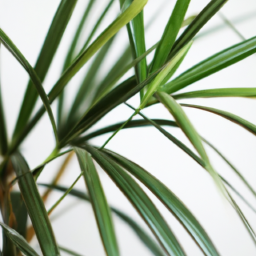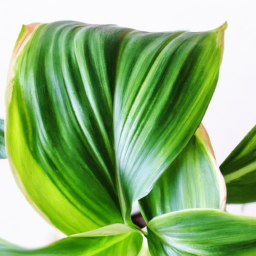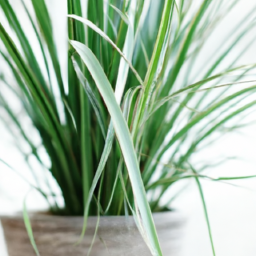
Are you a plant enthusiast looking to bring some greenery into your home? Well, you’re in luck! In this blog post, we will be exploring the wonderful world of indoor plants and their names. Whether you’re a seasoned plant parent or just starting out, knowing the names of different indoor plants can help you better care for them and create a thriving indoor garden. So, let’s dive in and discover the fascinating array of indoor plants that can transform your living space into a lush oasis.
Benefits of Indoor Plants: Exploring the Positive Effects of Greenery in Your Home
Indoor plants not only add aesthetic appeal to your home but also offer numerous benefits for your overall well-being. The presence of greenery indoors has been shown to have a positive impact on physical and mental health, air quality, and even productivity. In this article, we will delve into the various advantages of having indoor plants and how they can enhance your living space.
Improved Air Quality
One of the most significant benefits of indoor plants is their ability to purify the air by removing harmful toxins and releasing oxygen. Through a process called photosynthesis, plants absorb carbon dioxide and release fresh oxygen, thereby improving the air quality in your home. Studies have shown that certain plants, such as the Spider Plant (Chlorophytum comosum) and the Peace Lily (Spathiphyllum), can effectively remove pollutants like formaldehyde, benzene, and trichloroethylene from the air.
Moreover, indoor plants also act as natural humidifiers, increasing the moisture content in the air. This can be particularly beneficial during dry seasons or in regions with low humidity. By maintaining optimal humidity levels, indoor plants help prevent respiratory issues, dry skin, and allergies.
Additionally, plants release negative ions into the air, which can counterbalance the positive ions emitted by electronic devices and improve overall air freshness. This can have a positive impact on your mood, energy levels, and overall well-being.
Enhanced Mental Well-being
Having indoor plants can significantly contribute to your mental well-being and create a calming and stress-relieving environment. Research has shown that being around plants can reduce stress levels, lower blood pressure, and promote relaxation. The color green itself is known to have a soothing effect on our minds, making indoor plants a perfect addition to create a tranquil atmosphere in your home.
Furthermore, caring for indoor plants can be therapeutic and provide a sense of purpose and responsibility. The act of nurturing and watching your plants grow can instill a sense of accomplishment and boost your mood. Indoor plants also improve focus and concentration, making them ideal for home offices or study areas.
Incorporating plants with broad leaves and vibrant colors, such as the Snake Plant (Sansevieria), the Boston Fern (Nephrolepis exaltata), or the Rubber Plant (Ficus elastica), can add visual interest and create a visually appealing and harmonious space.
Increased Productivity and Creativity
Indoor plants can have a positive impact on your productivity and creativity levels. Research has shown that having greenery in your workspace or study area can boost cognitive function and enhance creativity. Plants help reduce mental fatigue and increase focus, allowing you to stay more engaged and productive in your tasks.
Moreover, indoor plants have been found to improve job satisfaction and overall well-being in office environments. By creating a more pleasant and inviting atmosphere, plants can contribute to a positive work environment and foster a sense of connection with nature, even indoors.
When selecting indoor plants for productivity and creativity, consider plants like the Spider Plant, the Aloe Vera (Aloe barbadensis), or the English Ivy (Hedera helix). These plants are relatively low-maintenance and can thrive in various lighting conditions, making them suitable for different spaces within your home.
In conclusion, incorporating indoor plants into your home not only adds beauty and visual appeal but also offers a wide range of benefits for your physical and mental well-being. From improving air quality to enhancing mental health and increasing productivity, indoor plants have the power to transform your living space into a healthier and more vibrant environment. So go ahead, choose your favorite indoor plants, and enjoy the positive effects of greenery in your home!

Popular Indoor Plants and Their Names: A Comprehensive Guide for Plant Enthusiasts
Welcome to our comprehensive guide on popular indoor plants and their names! If you are a plant enthusiast or looking to add some greenery to your indoor space, this article is for you. Indoor plants not only beautify your surroundings but also provide numerous health benefits. In this guide, we will explore a variety of indoor plants, their names, and essential care tips. Let’s dive in!
Benefits of Indoor Plants
Before we delve into the world of indoor plants, let’s take a moment to understand the benefits they offer. Indoor plants are not just pretty decorations; they also contribute to our overall well-being. Here are some key benefits:
Purify the Air
Indoor plants act as natural air purifiers by absorbing harmful pollutants and releasing oxygen. They can remove toxins such as formaldehyde, benzene, and trichloroethylene from the air, improving the air quality in your home or office.
Some popular air-purifying plants include:
- Snake Plant (Sansevieria)
- Spider Plant (Chlorophytum comosum)
- Peace Lily (Spathiphyllum)
- English Ivy (Hedera helix)
Boost Mood and Productivity
Indoor plants have a positive impact on our mental health and well-being. They can reduce stress, anxiety, and depression, while also increasing productivity and focus. Studies have shown that being around plants can improve our mood and overall happiness.
Some mood-boosting plants to consider are:
- Lavender (Lavandula)
- Jasmine (Jasminum)
- Aloe Vera (Aloe barbadensis)
- Gerbera Daisy (Gerbera jamesonii)
Improve Indoor Climate
Indoor plants can help regulate humidity levels and create a more comfortable indoor climate. They release moisture through a process called transpiration, which can be beneficial in dry environments. Additionally, plants can act as natural humidifiers, especially during the winter months when the air tends to be drier.
Some plants known for their humidifying properties include:
- Areca Palm (Dypsis lutescens)
- Boston Fern (Nephrolepis exaltata)
- Chinese Evergreen (Aglaonema)
- Peace Lily (Spathiphyllum)
Popular Indoor Plants and Their Names
Now that we understand the benefits, let’s explore some popular indoor plants and their names. These plants are not only visually appealing but also relatively easy to care for, making them ideal choices for beginners:
1. Snake Plant (Sansevieria)
The Snake Plant, also known as Mother-in-law’s Tongue, is a popular choice for indoor gardening enthusiasts. It features long, upright leaves with variegated patterns, adding a touch of elegance to any space. Snake Plants are known for their ability to tolerate low light conditions and require minimal watering.
These plants thrive in well-draining soil and prefer indirect sunlight. Water them sparingly, allowing the soil to dry out between waterings. Snake Plants are excellent air purifiers and can survive in various indoor environments.
2. Pothos (Epipremnum aureum)
Pothos, also known as Devil’s Ivy, is a versatile and low-maintenance indoor plant. It has heart-shaped leaves that come in various shades of green, making it a popular choice for hanging baskets or trailing down shelves. Pothos is known for its ability to purify the air and can thrive in a wide range of lighting conditions.
These plants prefer well-draining soil and should be watered when the top inch of soil feels dry. Pothos can tolerate low light but will grow faster and produce more vibrant leaves in bright, indirect light.
3. Spider Plant (Chlorophytum comosum)
The Spider Plant is a classic indoor plant known for its arching leaves and spider-like plantlets that dangle from the mother plant. It is an excellent choice for beginners due to its resilience and adaptability. Spider Plants thrive in bright, indirect light but can tolerate lower light conditions.
These plants prefer well-draining soil and should be watered when the top inch of soil feels dry. Spider Plants are non-toxic to pets, making them a safe choice for households with furry friends.
4. ZZ Plant (Zamioculcas zamiifolia)
The ZZ Plant is a popular choice for those seeking a low-maintenance indoor plant with glossy, dark green leaves. It is known for its ability to tolerate neglect and can survive in low light conditions. The ZZ Plant is an excellent option for offices or rooms with limited natural light.
These plants prefer well-draining soil and should be watered when the top inch of soil feels dry. Overwatering can lead to root rot, so it’s essential to allow the soil to dry out between waterings. The ZZ Plant is also an excellent air purifier.
5. Peace Lily (Spathiphyllum)
The Peace Lily is a beautiful flowering plant that adds elegance and a touch of serenity to any indoor space. It features dark green leaves and white flowers, creating a striking contrast. Peace Lilies prefer bright, indirect light but can tolerate lower light conditions.
These plants thrive in well-draining soil and should be watered when the top inch of soil feels dry. Peace Lilies are known for their ability to indicate when they need water, as their leaves will droop slightly. Once watered, they quickly recover.
Remember, these are just a few examples of popular indoor plants. There is a vast variety of plants to explore, each with its unique characteristics and care requirements. Before bringing any plant home, make sure to research its specific needs to ensure proper care.
Conclusion
Indoor plants not only enhance the aesthetic appeal of our living spaces but also offer numerous benefits for our well-being. From purifying the air to boosting mood and productivity, these green companions are truly remarkable. In this comprehensive guide, we discussed the benefits of indoor plants and explored some popular choices, such as Snake Plants, Pothos, Spider Plants, ZZ Plants, and Peace Lilies.
Remember to consider factors such as lighting conditions, watering requirements, and overall care when selecting indoor plants. With proper attention and care, your indoor plants will thrive and bring joy to your home or office. Happy gardening!

Choosing the Right Indoor Plants for Your Space: Factors to Consider and Plant Recommendations
Indoor plants not only add beauty and freshness to our living spaces but also provide numerous health benefits. However, selecting the right indoor plants for your space can be a daunting task. With a wide variety of plants available, it’s essential to consider several factors to ensure the plants thrive in your environment. In this article, we will explore the key factors to consider when choosing indoor plants and provide you with some plant recommendations that are suitable for various spaces.
Factors to Consider
1. Light Conditions:
One of the most crucial factors to consider when choosing indoor plants is the amount of light your space receives. Different plants have varying light requirements, ranging from low light to bright, indirect light. Assess the lighting conditions in your space, including the intensity and duration of sunlight exposure. This will help you determine which plants are best suited for your environment.
For areas with low light, consider plants like the Snake Plant (Sansevieria), ZZ Plant (Zamioculcas zamiifolia), or the Peace Lily (Spathiphyllum). These plants can tolerate low light conditions and thrive with minimal sunlight.
If your space receives bright, indirect light, options like the Spider Plant (Chlorophytum comosum), Pothos (Epipremnum aureum), or the Chinese Evergreen (Aglaonema) are excellent choices. These plants can handle moderate light levels and still flourish.
2. Space Availability:
Consider the available space in your home or office when selecting indoor plants. Some plants require more room to grow and spread, while others are more compact and suitable for smaller spaces. Determine whether you have ample floor space, shelves, or hanging areas to accommodate the plants you desire.
For limited floor space, consider plants like the Boston Fern (Nephrolepis exaltata), English Ivy (Hedera helix), or the Areca Palm (Dypsis lutescens). These plants have a vertical growth habit and can be placed on elevated surfaces or hung from the ceiling, maximizing your space.
If you have larger floor areas available, the Fiddle Leaf Fig (Ficus lyrata), Monstera Deliciosa, or the Rubber Plant (Ficus elastica) are popular choices. These plants have a bushier growth habit and can become stunning focal points in your space.
3. Maintenance Requirements:
Consider the level of maintenance you are willing to provide for your indoor plants. Some plants require regular watering, pruning, and fertilizing, while others are more low-maintenance and forgiving.
If you prefer low-maintenance plants, options like the Snake Plant, ZZ Plant, or the Jade Plant (Crassula ovata) are ideal. These plants can tolerate neglect and thrive with minimal care.
For those who enjoy tending to their plants, the Swiss Cheese Plant (Monstera adansonii), Bird of Paradise (Strelitzia reginae), or the Peace Lily are great choices. These plants may require more attention but can reward you with beautiful blooms or unique foliage.
Plant Recommendations
1. Snake Plant (Sansevieria):
The Snake Plant, also known as Mother-in-Law’s Tongue, is a popular choice for indoor spaces. It has striking, upright leaves that come in various shades of green and yellow. Snake Plants are known for their air-purifying qualities and ability to tolerate low light conditions, making them suitable for bedrooms and offices.
2. Spider Plant (Chlorophytum comosum):
The Spider Plant is a classic indoor plant with long, arching leaves that have white stripes. It is known for its air-purifying properties and easy care. Spider Plants thrive in bright, indirect light and can be placed in hanging baskets or on shelves.
3. Fiddle Leaf Fig (Ficus lyrata):
The Fiddle Leaf Fig is a popular choice for interior decoration due to its large, violin-shaped leaves. It requires bright, indirect light and regular watering. Fiddle Leaf Figs can grow tall and become a statement piece in any room.
Remember, when selecting indoor plants, always consider factors such as light conditions, space availability, and maintenance requirements. By understanding these factors and exploring suitable plant options, you can create a thriving indoor garden that enhances your living space and brings a touch of nature indoors.
Let’s recap
Indoor plants have become increasingly popular in recent years, not only for their aesthetic appeal but also for their numerous health benefits. But what happens when you bring home a new plant and have no idea what it’s called? Fear not, because in this blog post, we will explore the world of indoor plants and their names.
Whether you’re a seasoned plant parent or just starting your green journey, knowing the names of your indoor plants can be helpful in understanding their care requirements and characteristics. From the classic Snake Plant (Sansevieria) to the trendy Monstera Deliciosa, each plant has its own unique name that reflects its botanical identity. Learning these names not only allows you to confidently discuss your plants with fellow enthusiasts but also helps you research and troubleshoot any issues that may arise. So, let’s dive into the fascinating world of indoor plants and discover the names that make them truly special.
Here are the top questions that we were asked:
Q1: What are some popular indoor plants and their names?
A1: There are numerous popular indoor plants with different names. Some common ones include the Spider Plant (Chlorophytum comosum), Snake Plant (Sansevieria trifasciata), Peace Lily (Spathiphyllum wallisii), Pothos (Epipremnum aureum), and ZZ Plant (Zamioculcas zamiifolia).
Q2: What are the benefits of having indoor plants?
A2: Indoor plants offer several benefits. They purify the air by removing toxins and releasing oxygen, which improves overall air quality and promotes better health. They also add a touch of nature and aesthetics to indoor spaces, creating a calming and visually appealing environment. Additionally, indoor plants can help reduce stress, increase productivity, and even boost mood.
Q3: How do I take care of indoor plants?
A3: Proper care is crucial for the well-being of indoor plants. Here are some general guidelines:
- Watering: Ensure you water your plants appropriately, as different species have different watering needs. Overwatering or underwatering can harm them.
- Light: Place your plants in areas with suitable light conditions according to their requirements. Some prefer bright, indirect light, while others thrive in low-light environments.
- Temperature and Humidity: Maintain suitable temperature and humidity levels for your plants, as extremes can negatively affect their health.
- Soil and Fertilizer: Use well-draining soil and provide occasional fertilization to supply necessary nutrients.
- Pruning and Cleaning: Regularly remove dead leaves, trim overgrown parts, and clean dust off the leaves to keep your plants healthy and attractive.
Q4: Can indoor plants thrive in low-light conditions?
A4: Yes, there are several indoor plants that can thrive in low-light conditions. Some examples include the Snake Plant, ZZ Plant, Pothos, Chinese Evergreen (Aglaonema), and Cast Iron Plant (Aspidistra elatior). These plants have adapted to survive in environments with limited natural light and can still grow and thrive indoors.
Q5: Are indoor plants safe for pets?
A5: While many indoor plants are generally safe, some can be toxic to pets if ingested. It’s important to research and choose pet-friendly plants if you have furry friends at home. Some safe options include Boston Fern (Nephrolepis exaltata), Areca Palm (Dypsis lutescens), Spider Plant, and Money Plant (Epipremnum aureum). However, it’s always best to monitor your pets around plants and consult with a veterinarian if you have any concerns.
Dr. Olivia Green is a botanist with over two decades of experience in indoor plant cultivation. She holds a Ph.D. in Plant Biology and has dedicated her career to researching plant behavior in controlled environments. Dr. Green is passionate about helping plant enthusiasts master the art of indoor gardening through her extensive knowledge and practical insights.


